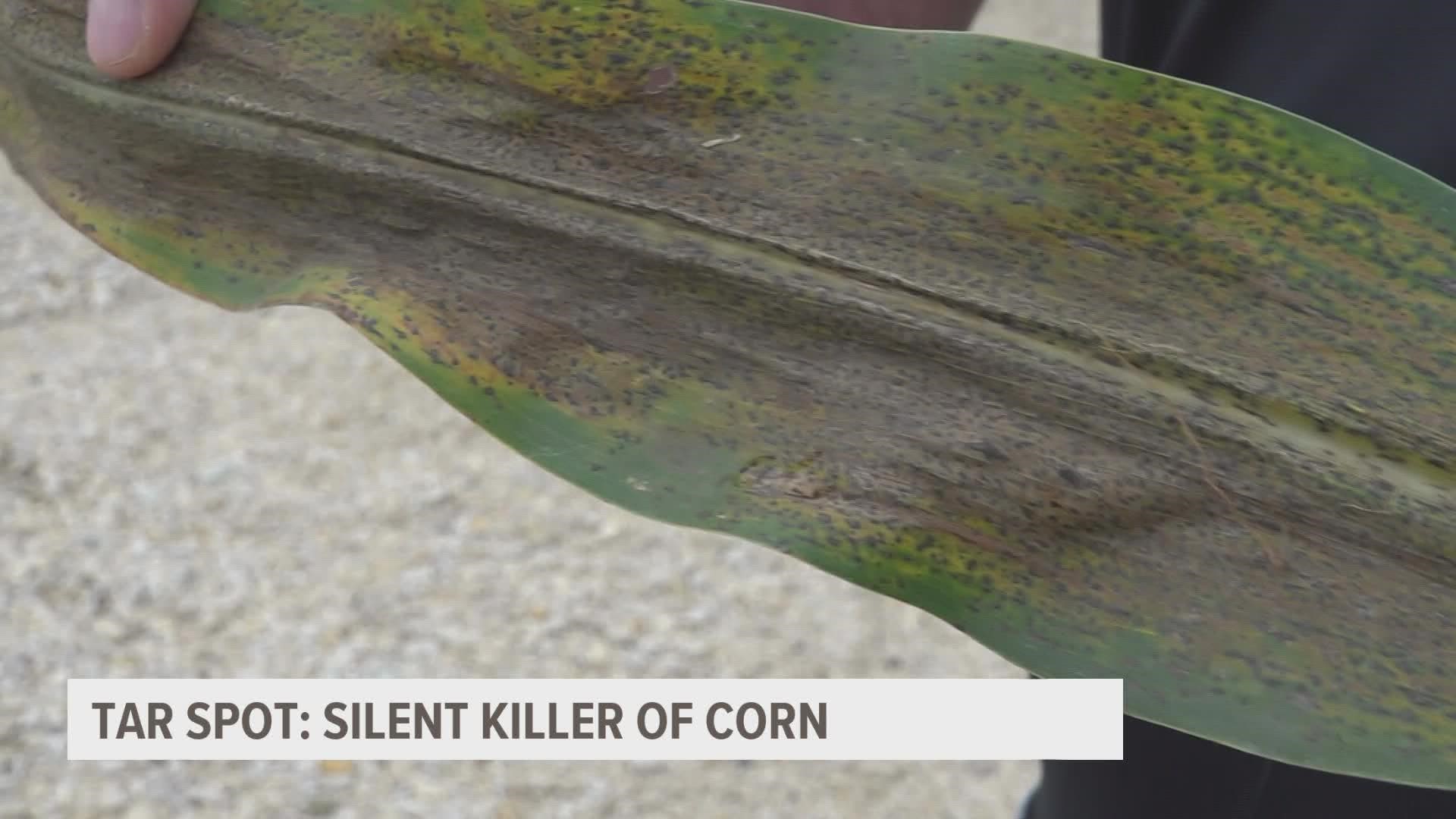OGDEN, Iowa — You probably haven't heard of it before, but farmers across Iowa are quickly becoming acclimated with it.
"Tar spot is something that's been scaring a lot of people. From what I've seen, it is very aggressive, and it has to be managed," said Brett Heineman, a fifth-generation Boone County farmer.
Dan Bjorklund has been an agronomist for over four decades. Tar spot's yield impact is as substantial as anything he's seen in his 43 years out on the fields.
"I know of no other leaf disease that progresses this quickly," he said.
He showed three different corn leaves to Local 5, all of them infected with tar spot, with only three weeks difference in exposure times between them.
"If we get enough of these [heavily infected example] leaves down the plant, the plant prematurely dies," Bjorklund added.
Heineman is astonished with how quickly it's taken over the management show on his 7,000 acres of farmland.
"I can't believe how quickly it's moved since I've been out here last week. The biggest thing about it is it requires more management, which means that you have to spend more money on it. It is going to drive up our costs, which gets passed on to consumers" he said.
The actual yield hit to farmers across the state won't be known until harvest comes in the next month or so. But Heineman thinks the impact will be substantial.
"From talking to people that have been really managing this, there's an easy potential to lose 80 bushels out here. It's going to change the game."
The origins of tar spot aren't known well. It originated in Mexico, and thinking is that it arrived in the United States thanks to a tropical system. But according to Bjorklund, no one is quite sure the exact origins.
It is spread most easily over winters with corn residue, as spores of the fungi are blown around by wind. Wet weather increases the concentration of the disease as well, which is why higher hits to yields will be more likely in northeast Iowa, where much more rain has fallen this summer.

